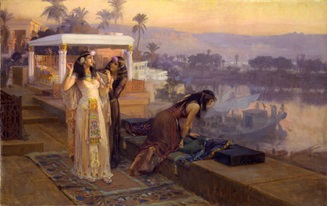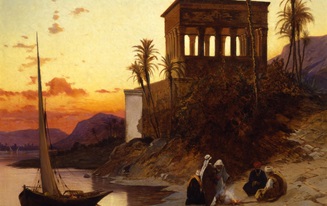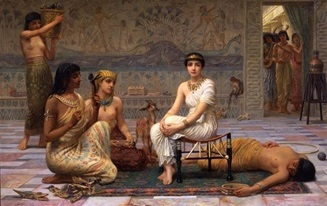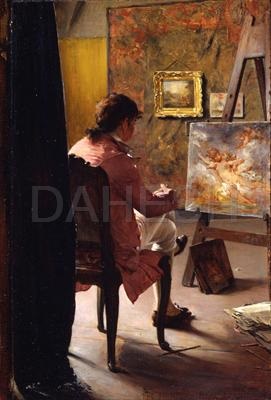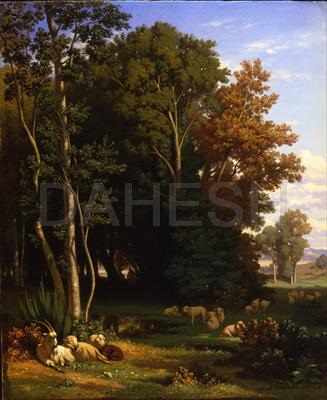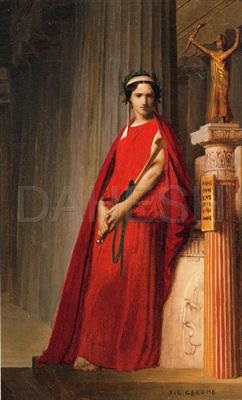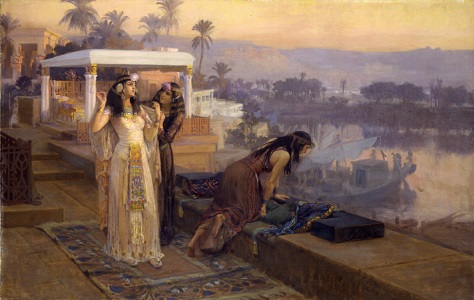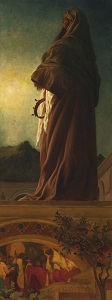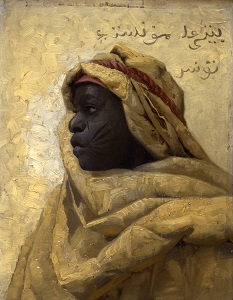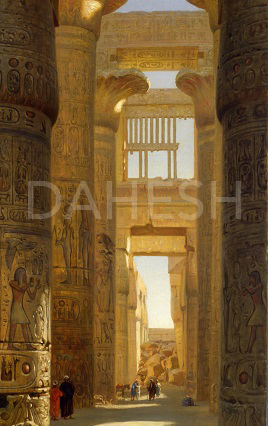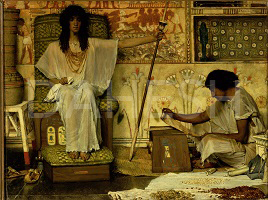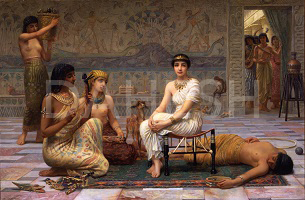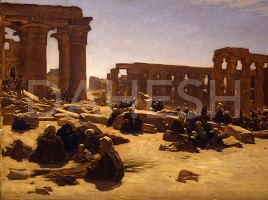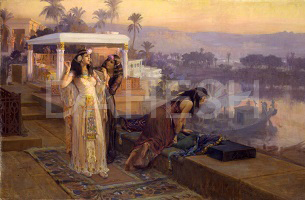- About
- Visit
- Exhibitions
- Collection
- Overview
- Search the Collection
- Recent Acquisitions
- SPOTLIGHT ON …
- Bouguereau’s “Amiable” Pictures Cross the Atlantic
- Back to Work
- The Allure of Animals in Academic Art
- Classical Mythology in 19th-century French Art
- Celebrities: Portrait medals in 19th-Century France
- Oriental “Native Types” from the Dahesh Collection
- Recording Islamic Architecture and Design
- French Natural Selections
- Painting Piety from the Dahesh Collection
- About Face: Learning to Draw Emotion through Expressive Heads
- From St. Petersburg to Paris: The Education of Russian Artists in France
- Picturing the News: The Birth of the Illustrated Press
- Egyptomania: 19th Century Depictions of Ancient Egypt
- The Franco-Prussian War and Its Aftermath in French Art
- Painting Pompeii: From Neoclassicism to the Néo-Grecs
- The Spanish Orient and Henri Regnault (French, 1843–1871)
- Women Artists Who Dared II: Jeanne Thil (French, 1887–1968) and Marie Hadad (Lebanese, 1889–1973)
- Women Artists Who Dared I: Rosa Bonheur (French, 1822–1899) and Elizabeth Gardner Bouguereau (American, 1837–1922)
- Peder Mork Mønsted’s (Danish, 1859–1941) Poetic Views of Nature
- Publications
- Programs
- Shop
- News
Search Results for: ‘frederick arthur bridgman’
-
Frederick Arthur Bridgman, An Oriental Beauty
Frederick Arthur Bridgman, (American, 1847–1928)
An Oriental Beauty
Oil on canvas, 26 x 32 in.
Signed lower left: F. A. Bridgman
2012.16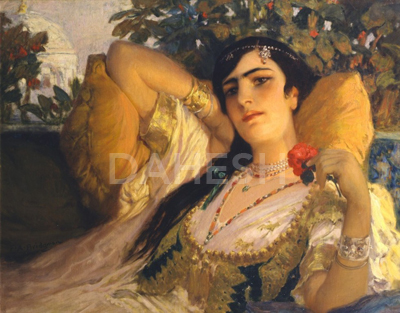
Bridgman’s Oriental Beauty displays his familiarity with the Algerian women he saw and the outfits they wore, as he noted in his book Winters in Algeria (1890) “the height of fashion is to wear everything of the same color, for instance yellow head kerchief bordered with gold and silk fringe, yellow ribbons to ornament the thin chemise, yellow silk bodice, pantaloons of the same color, and yellow leather slipper.” Dressed in color-coordinated and fashionable dress, and adorned with opulent accessories, Bridgman’s beauty languidly reclines in a state of reverie, while her hand gently holds a flower, suggesting she may be dreaming of a lover — an Orientalist trope that catered to 19th-century Western viewers’ expectations.
-
Frederick Arthur Bridgman, Pensive Moments
Frederick Arthur Bridgman (American, 1847–1928)
Pensive Moments
Oil on canvas, 22 x 18 1/2 in.
2013.2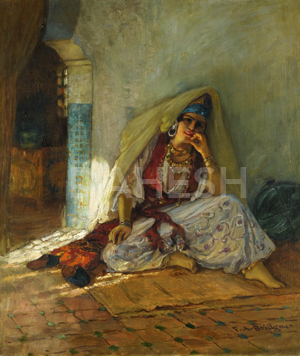
Bridgman, a renowned late 19th-century American painter, chose to live in France and devote himself to Orientalist subjects — especially North African scenes of daily life. In Pensive Moments, he presents a favorite subject, a North African woman in exotic dress with gauze sleeves, a bodice over her shoulders, and a conical hat usually worn by the women of Tlemcen — a town in northwestern Algeria. Bridgman described the costume in his book Winters in Algeria (1890), commenting that it resembled Moroccan dress because the Algerian city was near the Moroccan border. This recent acquisition — the third oil painting by the artist to enter the Museum’s collection — exemplifies Bridgman’s later naturalistic style. During the 1880s a freer and more painterly style replaced the meticulously polished compositions influenced by his teacher Jean-Léon Gérôme — as in An Oriental Beauty (in the Museum collection). Bridgman infuses this composition with sunlight pouring through the doorway to illuminate the seated woman who appears to be lost in thought.
-
Frederic Arthurk Bridgman, Cleopatra on the Terraces of Philae
Frederick Arthur Bridgman (American, 1847–1928)
Cleopatra on the Terraces of Philae, 1896
Oil on canvas, 29 7/8 x 46 1/8 in.
Signed and dated lower right: F. A. Bridgman / 1896
1999.5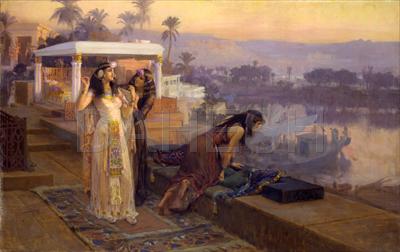
While Bridgman specialized in scenes from daily life in North Africa—especially its women—this painting is one of several imaginary historical scenes set in ancient Egypt. Cleopatra prepares her departure by boat from the idyllic island of Philae, now best known for its ruins of the Kiosk of Trajan, here depicted in the far left background—which was not actually built until a century after Cleopatra’s reign. After being shown at the Paris Salon of 1896, this painting was exhibited at the National Academy of Design in New York the following year, and eventually acquired by William Randolph Hearst, who hung it at San Simeon, his castle on the California coast.
-
Ancient Egypt & the Napoleonic Era: Masterworks from the Dahesh Museum of Art
For centuries, Egypt’s pyramids, temples, pharaohs, and hieroglyphics were tantalizing but dimly known in the West. Napoleon’s militarily disastrous expedition to Egypt in 1798, however, created the first major artistic and scholarly study of that country with the publication of the encyclopedic Description de l’Égypte (1809–29). Writers, curious travelers, scholars and, most crucially, artists from many European countries followed and explored all aspects of its culture; Egypt’s Pharaonic, Ptolemaic, Classical, and Islamic history was finally revealed.
Ancient Egypt & the Napoleonic Era tells the story of the artistic legacy of Napoleon’s Egyptian expedition (1798–1801) that inspired a wave of artists trained in the finest art academies in Paris, London, Rome and other international venues, where they learned the visual and technical acuity that characterizes academic art. Drawn from the rich collection of the Dahesh Museum of Art, the exhibition highlights vivid 19th-century Orientalist views by European and American artists, including Frederick Arthur Bridgman, Hermann David Salomon Corrodi, and Edwin Longsden Long, as well as superlative contemporary engravings from the Description de l’Égypte, a publication that transformed the study of Egypt. The exhibition demonstrates the ubiquity of the Orientalist phenomenon in its inclusion of works of art in a wide range of techniques, from salon paintings (seen in exhibitions by a wide public) to popular prints.
-
Beauty, Passion & Bliss: 19th-Century Masterworks from the Dahesh Museum of Art
Drawn from the rich collections of the Dahesh Museum of Art, Beauty, Passion & Bliss at the Huntsville (AL) Museum of Art features an outstanding selection of paintings and sculptures that embody the 19th-century European academic tradition, which was based on learning to draw the human figure while adhering to principles of ideal beauty epitomized by Classical and Renaissance art.
The exhibition encompasses a wide range of themes and styles, including historical, religious, and mythological works, considered the highest form of art, as well as examples of the ways in which historical themes were transformed into intimate genre scenes, landscapes, idealized rustic subjects, and explorations of the Middle East (the subject of Orientalism, 2019’s exhibition from the Dahesh Museum of Art at the Huntsville Museum of Art). The combination of exquisite technical ability and accessible subject matter especially appealed to wealthy and middle-class European and American collectors. Artists featured include such major figures as Jean-Léon Gérôme (image upper right), William Adolphe Bouguereau, and Alexandre Cabanel, as well as lesser known but equally interesting figures like Ignaz-Marcel Gaugengigl (image upper left) and Jean-Achille Benouville (center image). Especially notable are two splendid paintings by Frederick Arthur Bridgman, born in Tuskegee, Alabama, and hugely successful after academic training in Paris and extensive overseas travel.
J. David Farmer, Dahesh Museum of Art Director of Exhibitions, will inaugurate the exhibition on the evening of March 26 with a lecture describing the important role art academies played in 19th-century art. He will focus on two transformative academies, the renowned École des Beaux-Arts in Paris (established 1648) and the Koninklijke Academie voor Schone Kunsten in Antwerp, Belgium (1663), the two earliest academies formally chartered in Europe. The exhibition is especially strong in paintings and sculptures related to the Paris academy, and further works from the Antwerp academy will introduce less familiar artists who validated Belgium’s rich cultural heritage long before nationhood in 1830. Both academies attracted numerous foreign students, demonstrating the international character of art in the 19th century.
-
delete-1
2023 AHNCA/Dahesh Graduate Student Symposium
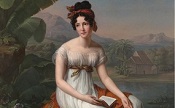
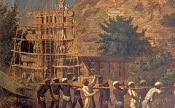
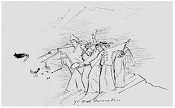
The Association of Historians of Nineteenth-Century Art (AHNCA) has conferred the Dahesh Museum of Art Prize of $1000 to each of three emerging scholars who gave outstanding presentations at the AHNCA/Dahesh Twentieth Annual Graduate Student Symposium in Nineteenth-Century Art, held virtually on March 25–26, 2023.
The recipients of the award are: Isabelle Gillet, University of Michigan; Bojana Rimbovska, University of Canterbury Te Whare Wānanga o Waitaha, New Zealand; and Alex Round, Birmingham City University, UK. Read More
Coming soon! The Dahesh Museum of Art collection will be featured in the following exhibitions:
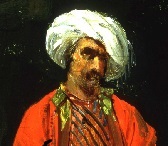
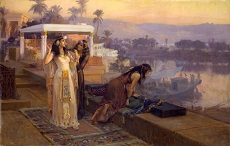
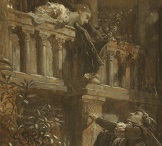
Horace Vernet (1789–1863), Musée National des Châteaux de Versailles et de Trianon, Versailles, France, November 14, 2023 to March 17, 2024
Orientalist Encounters: Masterworks from the Dahesh Museum of Art, Vero Beach Museum of Art, Vero Beach, Florida, January 27 to April 21, 2024
Pre-Raphaelites: A Modern Renaissance, Musei di San Domenico, Forlì (Emilia-Romagna), Italy, February 23 to June 30, 2024
The DaheshVMuseum of Art Gift Shop is available online.
The Dahesh In Focus Series
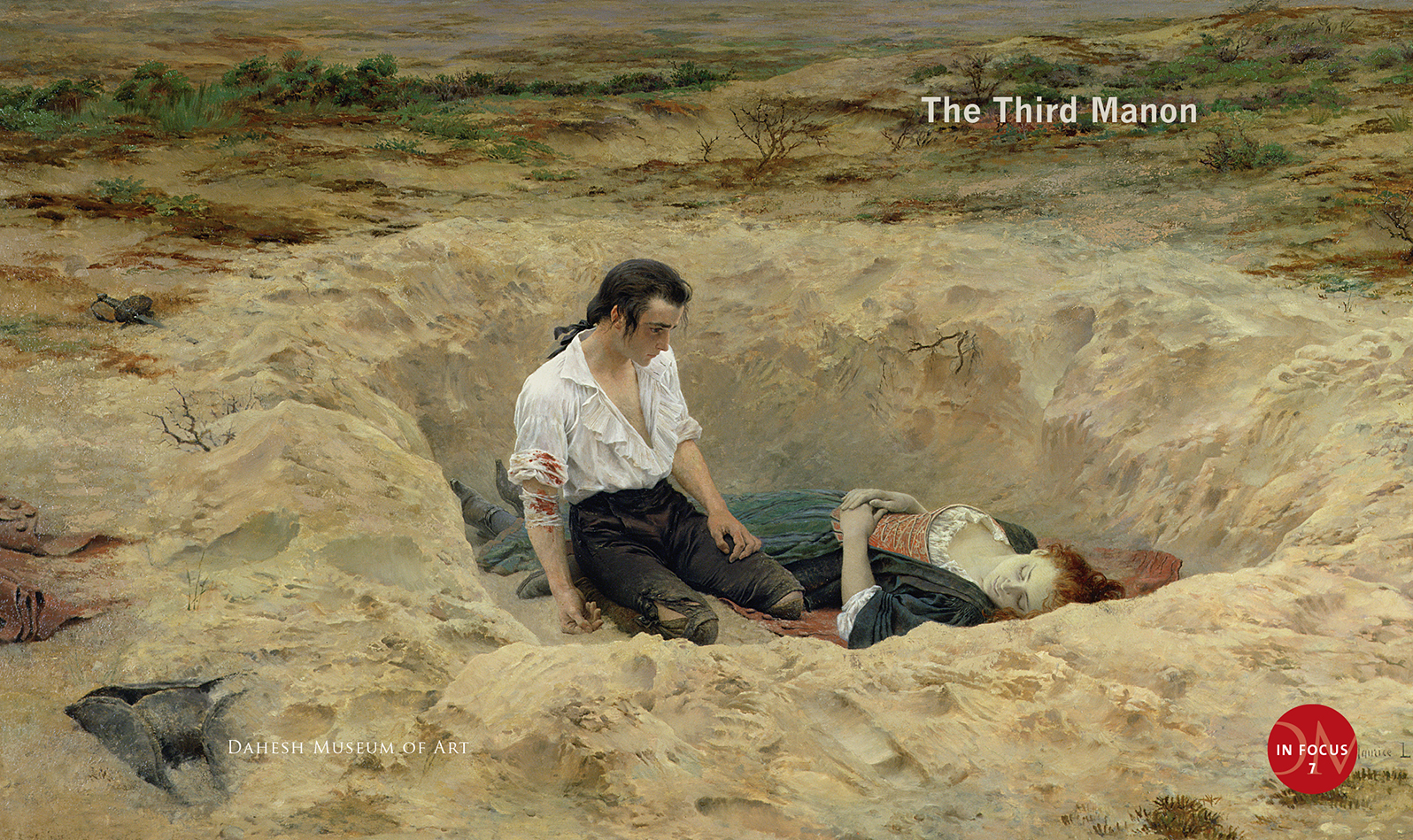
The Museum is pleased to announce the arrival of a new publication in the In Focus series. Begun in 2016, the series explores aspects of academic art, major artists, or a single work of art, fully illustrated with examples from the Dahesh’s rich collection and comparative visual images. Each publication in the series features an essay written by a Dahesh staff member or scholar in the field. Buy Online
-
Orientalism: The Allure of North Africa and the Near East
Orientalism: The Allure of North Africa and the Near East – Masterworks from the Dahesh Museum of Art explores how artists from both Europe and America represented the cultures and peoples of Turkey, the Middle East, and North Africa– both real and imagined – during the 19th century.
The Orient enchanted Romantic artists who wanted to escape Europe’s urban rigors, Realists who sought to record the “authentic” Orient, and others simply in search of fresh subject matter to satisfy the demands of a changing Western art market. Some traveled to the region as part of official government missions, others accompanied wealthy patrons, or were hired by the local elites and royalty.
Drawn from the Dahesh Museum of Art and a private collection, Orientalism: The Allure of North Africa and the Near East – Masterworks from the Dahesh Museum of Art features over 50 exceptional paintings, sculptures, and lavishly illustrated books by artists from Europe and America, such Frederick Arthur Bridgman, Hermann-David-Salomon Corrodi, Rudolf Ernst, Ludwig Deutsch, Joseph Farquharson, Charles-Théodore Frère, Owen Jones, Frederic Lord Leighton, Edwin Longsden Long, and Émile Prisse d’Avennes.
The exhibition explores the artistic legacy of Western encounters with the Orient in the 19th century through a variety of themes ranging from the West’s fascination with Ancient Egypt, Medieval Islamic architecture and design, and the exploration of biblical history, to the exotic genre and harem scenes. The stories unfolded by the artists’ travels reveal the cross-cultural exchanges that continue to engage us two centuries later.
-
Egyptomania: 19th Century Depictions of Ancient Egypt
Ancient Egypt was a continual source of inspiration for 19th century artists, who documented its ruins, depicted historic events, and reimagined everyday life from the Nile’s distant past. Europe’s fascination with Egypt was ignited by Napoleon Bonaparte’s expedition in 1789, which resulted in the discovery of the Rosetta Stone (196 BC, British Museum) and the publication of the encyclopedic Description de l’Égypte (1809–1828), compiled by Napoleon’s team of scholars. Containing more than 800 engravings, works like Charles-Louis Balzac’s view of the ruins on Philae or André Dutertre’s interior of the tomb of King Ramsses II inspired Europe’s Egyptomania, a taste for ancient Egyptian art and culture.
Travel to Egypt was both costly and time consuming––especially at the beginning of the 19th century––but artists could learn about the Nile’s history from books and new archaeological collections in Europe’s museums. These institutions had been greatly enriched by tomb raiders and excavators like Bernardino Drovetti, Henry Salt, and Giovanni Belzoni, who assembled Egyptian collections for the Louvre, the Turin Museum, and the British Museum. Lawrence Alma-Tadema, a leading painter of antiquity, drew on several pieces from the British Museum in his work Joseph, Overseer of Pharaoh’s Granaries (1874), including a wall painting from the tomb of Nebamun and a cartouche of Tuthmosis II, seen on Joseph’s throne. Artists also found inspiration in illustrated books––Edwin Longsden Long, for instance, included in his painting Love’s Labour Lost (1885) a wall mural, toys, vase stand, and stools, illustrated in Manners and Customs of the Ancient Egyptians (1837), by John Gardner Wilkinson.
As travel to Egypt became more accessible, paintings of ruins and ancient sites became increasingly popular. In The Temple of Karnak. The Great Hypostyle Hall (1890), Ernst Karl Eugen Koerner emphasizes the hall’s enormous scale, while Joseph Farquharson’s The Ruins of the Temple at Luxor (ca. 1890) focuses on the general impression of another famous site, though he includes distinctive details like the papyrus bundle columns to the right of the temple. Hermann Corrodi, who first travelled to Egypt during the winter of 1876–1877, used the Kiosk of Trajan on Philae as a backdrop for his genre scene of native men by a fire.
Egyptomania was equally strong in America, and architects produced Pharaonic buildings such as the Washington Monument (Washington D.C.), while painters like Frederick Arthur Bridgman created dreamy works like Cleopatra on the Terraces of Philae (1896). One of several imaginary scenes that Bridgman set in ancient Egypt, the work was acquired by William Randolph Hearst, who hung it at his California castle, San Simeon. The fascination with ancient Egypt continued in both America and Europe into the Art Deco period, thanks to Howard Carter’s discovery of Tutankhamun’s tomb in 1922.
-
Artwork of the Month
April 2013
Frederick Arthur Bridgman, American, 1847-1928
Cleopatra on the Terraces of Philae, 1896
Oil on canvas, 29 7/8 x 35 1/2 in.
Signed and dated lower right: F. A. Bridgman / 1896
1999.5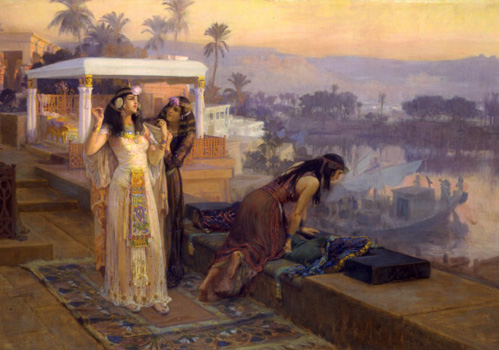
Frederick Bridgman, born in Alabama, worked as an engraver, and trained at the National Academy of Design in New York, before receiving a scholarship in 1866 to study with Jean-Léon Gérôme in Paris at the École des Beaux-Arts. Bridgman’s first encounter with the Orient was in 1872-74 during two extended trips to North Africa and the Middle East, visiting Morocco, Algeria, Tunisia, and Egypt. He subsequently focused on Orientalist subjects for his paintings and filled his two Paris studios with countless objects brought back from his travels. John Singer Sargent is said to have declared Bridgman’s studio to be one of the two things a visitor to Paris must see, the Eiffel Tower being the other.
While Bridgman specialized in scenes from daily in North Africa — especially its women — he painted several imaginary historical scenes set in ancient Egypt such as Cleopatra on the Terraces of Philae. Here, Cleopatra prepares her departure by boat from the picturesque island of Philae, now best known for its temple complex, including the Kiosk of Trajan here depicted in the far left background, but not actually built until a century after Cleopatra. After being shown at the 1896 Paris Salon, the painting was exhibited at the National Academy of Design in New York the following year. William Randolph Hearst acquired the painting, and for years it hung in his San Simeon castle on the California coast.
-
Dahesh Museum of Art in Partnership with Christie’s
New York Opens Orientalist Exhibition in Rockefeller Center
Encountering the Orient: Masterworks from the Dahesh Museum of Art
Through April 15, 2013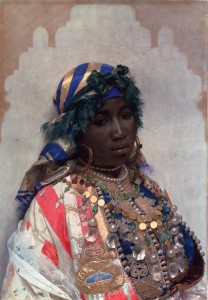 New York, New York — The Dahesh Museum of Art and Christie’s New York today announced a first-time partnership, an exhibition of 30 major Orientalist works from the Museum’s collection, plus related programs. Encountering the Orient: Masterworks from the Dahesh Museum of Art, opens to the public at Christie’s in New York City, 20 Rockefeller Plaza, on March 27 and remains on view until April 15, 2013. The exhibition celebrates the 19th-century rediscovery of the East by Western artists, and offers a fresh approach to Orientalism as a complex, highly contextual, cross-cultural encounter.
New York, New York — The Dahesh Museum of Art and Christie’s New York today announced a first-time partnership, an exhibition of 30 major Orientalist works from the Museum’s collection, plus related programs. Encountering the Orient: Masterworks from the Dahesh Museum of Art, opens to the public at Christie’s in New York City, 20 Rockefeller Plaza, on March 27 and remains on view until April 15, 2013. The exhibition celebrates the 19th-century rediscovery of the East by Western artists, and offers a fresh approach to Orientalism as a complex, highly contextual, cross-cultural encounter.This is the first time the young Museum is partnering with an auction house to present an exhibition. Their mutual goal is to provide loyal constituencies and new audiences of museumgoers, collectors, specialists and scholars with a fresh, more nuanced view of Orientalism, based on recent scholarship that re-frames the 19th-century encounter between East and West.
According to Alia Nour, Associate Curator at the Dahesh Museum of Art, who developed Encountering the Orient, “There are three main reasons for organizing this exhibition now, all of them timely. First, since the countries of North Africa and the Middle East are in the news daily, our mental map of the world is being re-drawn to include people and cultures in the region once known as ‘the Orient.’ Second, the Orient still has a powerful hold on the imaginative life of the West, as marked by the recent proliferation of exhibitions devoted to Egyptomania, the influence of Ancient Egypt, real and imagined, on popular culture. Finally, the field of 19th-century art history is growing. Young scholars are producing exciting inter-disciplinary research — revising old theories, breaking new ground. Thus, it seemed timely to re-examine Orientalism with a choice selection of Orientalist masterpieces from the Dahesh Museum’s Collection in collaboration with an institution that celebrates the art of 19th century, like Christie’s.”
According to Alexandra McMorrow, International Department Head, 19th–Century European Art, “Christie’s is thrilled to collaborate on this significant and timely exhibition. As an auction house, we are committed to not only connoisseurship but to scholarship as well. This exhibition is the perfect example of how our two different institutions can work together to contribute to a fuller understanding of 19th-century art and specifically Orientalism.”
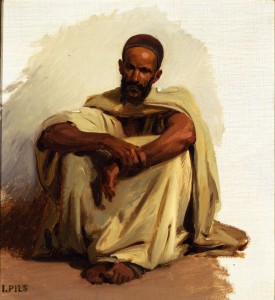 Encountering the Orient explores how artists from both Europe and America interpreted the culture and people of the Middle East and North Africa during the 19th century. Although fascination with the Orient began earlier, in the 19th century, Western encounters flourished following the industrial revolution, increased political interest, and new means of transportation. Enchanted by the exotic, romantic artists wanted to escape the urban rigors back home, realists sought to record the “real” Orient, and others looked for unusual subject matter to satisfy the new demands of a changing art market. Yet some who did not make the journey rendered an “imaginary” Orient inspired by both Arabic texts — such as One Thousand and One Nights –and many popular Western literary and travel accounts. After 1839, photographers provided plentiful documentation.
Encountering the Orient explores how artists from both Europe and America interpreted the culture and people of the Middle East and North Africa during the 19th century. Although fascination with the Orient began earlier, in the 19th century, Western encounters flourished following the industrial revolution, increased political interest, and new means of transportation. Enchanted by the exotic, romantic artists wanted to escape the urban rigors back home, realists sought to record the “real” Orient, and others looked for unusual subject matter to satisfy the new demands of a changing art market. Yet some who did not make the journey rendered an “imaginary” Orient inspired by both Arabic texts — such as One Thousand and One Nights –and many popular Western literary and travel accounts. After 1839, photographers provided plentiful documentation.Drawn from the Dahesh Museum of Art’s collection, the exhibition features 30 paintings, sculptures, and illustrated books by well-known artists, such as Rudolf Ernst, Ludwig Deutsch, Gustav Bauernfeind and Frederick Arthur Bridgman, as well as evocative works by less familiar names, such as José Tapiró y Baró. It addresses a broad variety of themes, ranging from Western fascination with ancient Egypt, Islamic architecture and design, ethnography, and biblical history to the exotic genre and harem scenes, and provides a fuller understanding of Orientalism and the artists who practiced it.
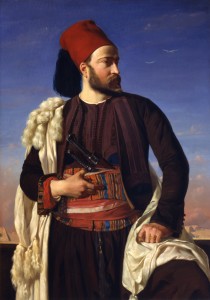 The Dahesh Museum of Art burst on the New York City museum scene in 1995, some 18 years ago, and is best known for its thoughtful, engaging exhibition program that champions 19th-century academic art, drawing on contemporary scholarship. The Museum’s rich holdings in Orientalist art (paintings, sculpture, and works on paper) are among the most frequently requested loans the Museum makes to arts institutions internationally and in the United States. Although it recently purchased a large office space in Hudson Square, where it offers Salon Thursdays, a series of free art historical lectures focused on the 19th century, it currently has no exhibition space of its own. Undaunted by this challenge, the Dahesh creatively forms partnerships with a variety of arts institutions to make sure the collection, along with curatorial insights, are shared with a diverse public. Most recently, Dahesh exhibitions traveled to the Bellarmine Museum of Art, Fairfield, Connecticut; the Munson-Williams Proctor Arts Institute, Utica, NY; the Frederick R. Weisman Museum of Art, Pepperdine University, Malibu, California; Lubin House Gallery, Syracuse University, New York City; and the Gallery of Light, Dubai, UAE. In April 2013, the Dahesh will lend five major Orientalist works to the Yale Peabody Museum of Natural History, New Haven, CT, for their exhibition, Echoes of Egypt: Conjuring the Land of the Pharaohs.
The Dahesh Museum of Art burst on the New York City museum scene in 1995, some 18 years ago, and is best known for its thoughtful, engaging exhibition program that champions 19th-century academic art, drawing on contemporary scholarship. The Museum’s rich holdings in Orientalist art (paintings, sculpture, and works on paper) are among the most frequently requested loans the Museum makes to arts institutions internationally and in the United States. Although it recently purchased a large office space in Hudson Square, where it offers Salon Thursdays, a series of free art historical lectures focused on the 19th century, it currently has no exhibition space of its own. Undaunted by this challenge, the Dahesh creatively forms partnerships with a variety of arts institutions to make sure the collection, along with curatorial insights, are shared with a diverse public. Most recently, Dahesh exhibitions traveled to the Bellarmine Museum of Art, Fairfield, Connecticut; the Munson-Williams Proctor Arts Institute, Utica, NY; the Frederick R. Weisman Museum of Art, Pepperdine University, Malibu, California; Lubin House Gallery, Syracuse University, New York City; and the Gallery of Light, Dubai, UAE. In April 2013, the Dahesh will lend five major Orientalist works to the Yale Peabody Museum of Natural History, New Haven, CT, for their exhibition, Echoes of Egypt: Conjuring the Land of the Pharaohs.



